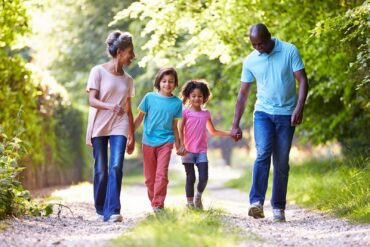 The man who wrote the words, “We hold these truths to be self-evident,” was later quick to document what he discovered to be another unquestioning truth.
The man who wrote the words, “We hold these truths to be self-evident,” was later quick to document what he discovered to be another unquestioning truth.
“The sovereign invigorator of the body is exercise, and of all the exercises, walking is best,” Thomas Jefferson wrote during the mid-1780s. “There is no habit you will value so much as that of walking far without fatigue.”
More than two centuries later, during a time when social distancing has interrupted so much within our lives, physical therapists continue to promote walking as not just great exercise, but also great medicine.
A Wonder Drug
There’s no one drug that can so positively affect your body as exercise, and that’s why many consider walking a wonder drug. Not only does it make you healthier, but also happier — each of which is so important during this COVID-19 era.
Multiple studies have shown walking is effective in everything from losing weight, strengthening the immune system, reducing blood pressure and warding off depression, to preventing diseases such as diabetes and cancer.
It’s also proven effective for easing and preventing back pain, which affects eight out of 10 people in the United States.
Walking for Back Pain
If you’re dealing with some back pain, but you don’t feel comfortable leaving your home for an assessment or treatment during the pandemic, walking can be a way to cope with, and even overcome, the discomfort.
One study conducted by Tel Aviv University’s Stanley Steyer School of Health Professions (2013) concluded that home aerobic walking programs may, in some cases, be as effective as clinical treatments for easing lower back pain.
According to the study, when you walk, your abdominal and back muscles work in much the same way as they do when you perform exercises specifically meant to target these areas. What makes walking all the more effective than these other exercises is that walking requires no special equipment and can easily fit into your daily routine.
Benefits to the Body
The inherent health benefits of a regular walking program include:
- Stronger muscles in the feet, legs, hips and torso — This increases stability of the spine, conditioning these muscles to keep the body upright and balanced.
- A nourished spine — Walking encourages improved circulation, which allows the body to pump nutrients into the spine’s soft tissues while washing away toxins.
- Improved flexibility and posture — Along with regular stretching, walking does what other, more targeted exercise is designed to do: It helps increase range of motion while preventing injury through better movement.
Walking also works to stimulate the brain into releasing serotonin and endorphins, neurotransmitter chemicals that can make you feel better both physically and mentally.
Coupled with the simple distraction inherent in a vigorous stroll, this can lead to a 10 to 50 percent reduction in lower back pain after just a single session of walking, according to a study published in The Spine Journal.
Easy and Accessible
In the end, walking is simply one of the easiest, most accessible way to get exercise. It doesn’t cost anything, and it’s something virtually anyone can do, even during COVID-19. Just continue to abide by all social distancing guidelines when on the sidewalks and trails.
When beginning a walking program for the first time, start off slow and easy, then gradually build up your speed and distance.
And, if you struggle to begin due to back pain, impairments in movement or other ailments, consult your physical therapist for a one-on-one assessment or virtual assessment.






















Comments